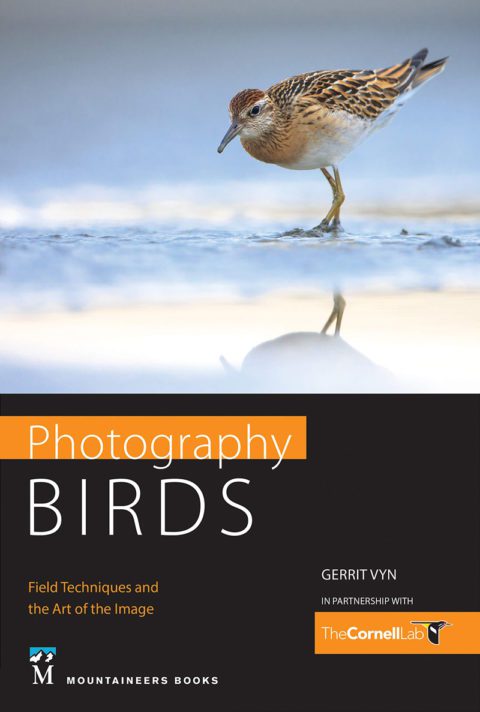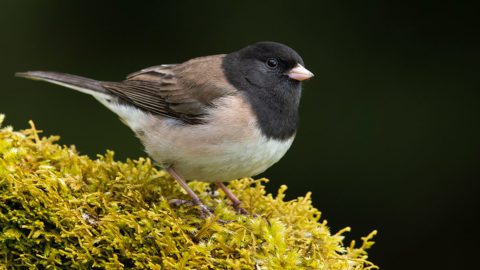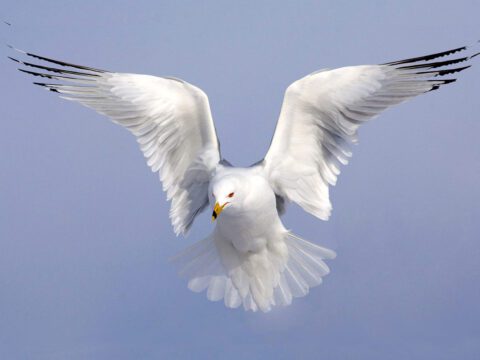Bird Photography Tips: How to Get Close to Birds Without Disturbing Them
By Gerrit Vyn
April 6, 2020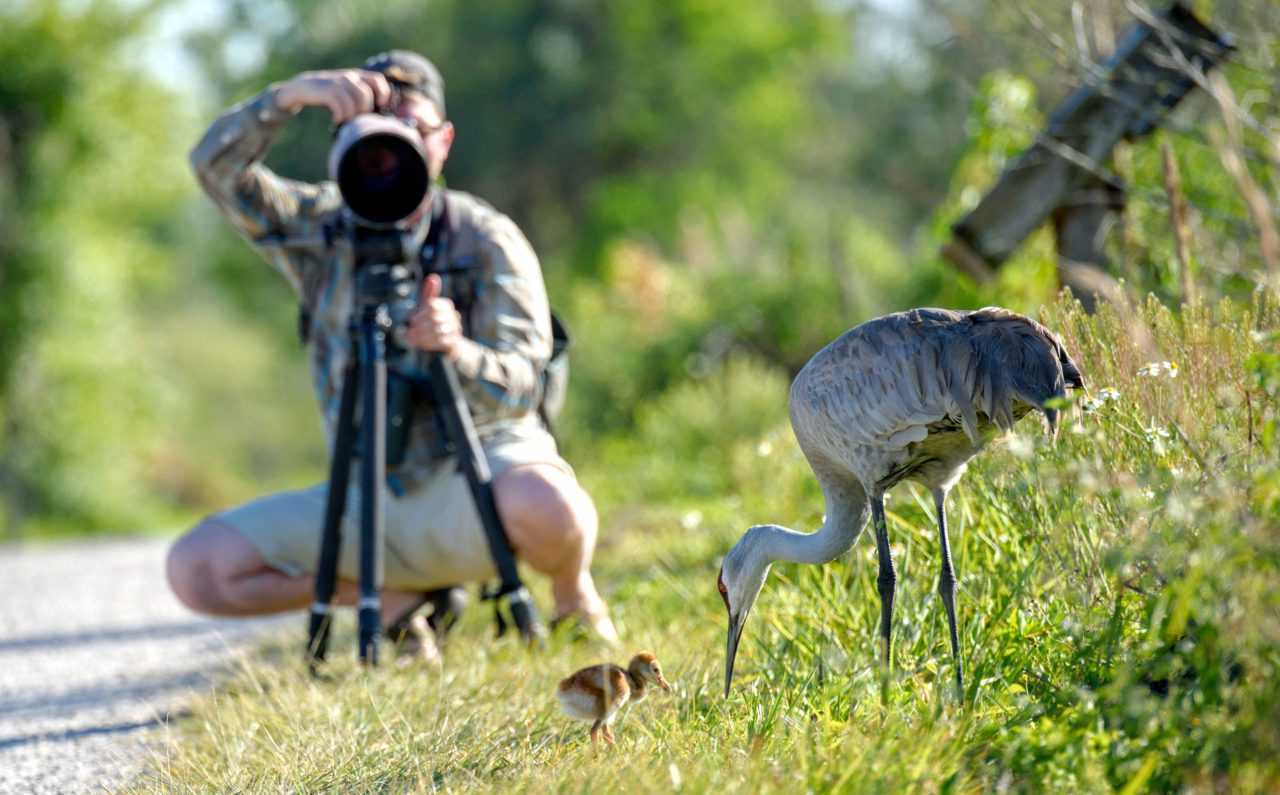
Getting close enough to photograph birds behaving naturally, without disturbing them or causing them to flee, is probably the most challenging part of bird photography. In this section, you’ll find my techniques for getting within shooting range in the field, including advice for those just getting started with bird photography. Keep in mind that for many species, individuals, and locations, it is just not possible to approach close enough for good images; sometimes you need to look for other opportunities.
Have Patience
Birds respond best when we are patient. Approaching birds slowly over time and allowing them to become accustomed to our presence and movements is perhaps the most important technique for getting close while they continue to behave naturally. When we give birds time to get used to us, they can be remarkably confiding. I once had a Savannah Sparrow that I was photographing in Alaska fly up and land on the brim of my hat, singing several times before departing! When a bird appears to be easily tolerating your approach, beware of the temptation to rush things. More often than not, with just one wrong move, the bird will be gone. Be patient.
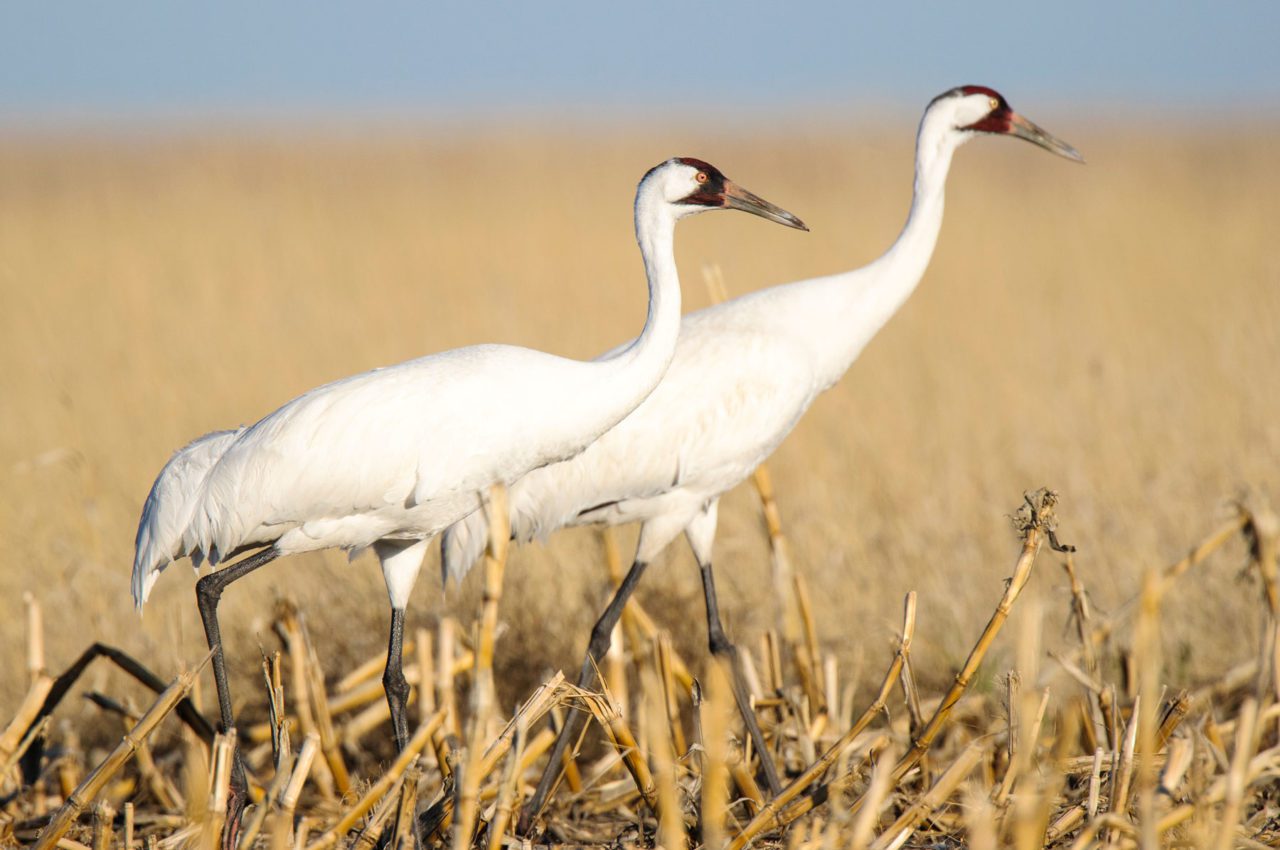
Remove Variables
I try to be meticulous when it comes to limiting variables. What I mean by this is that I want the bird to have the fewest possible stimuli to pay attention to or potentially be alarmed by. The best example of this is another person. If I am with someone else, I don’t want them doing anything that the bird will also have to pay attention to, including staring at it from a distance. I also want to keep that person on the same line that I am approaching from—in other words, directly behind me, so the bird isn’t feeling pressure from more than one direction.
More Photography Advice
Some other ways to limit variables include tucking in any clothing or straps that might blow in the wind and not wearing any bright colors or whites. I want to be the only thing the bird has to get used to. Wind is one variable you can’t control, and birds are often much more difficult to approach in windy conditions. When a bird’s senses are highly stimulated, it tends to be less comfortable and is likely to flush from further away.
Avoid Looking Like a Predator
Whether I am walking, crawling, or slithering toward a bird, I often do two things to avoid appearing to be a predator. First, I try not to look directly at the bird, and I don’t stare at it unless I know it is comfortable. I get in position by glancing at the bird from time to time or by using peripheral vision. I will often keep my head behind my camera and tripod so I appear smaller and conceal my face as much as possible.
Second, I generally approach birds at an angle rather than moving directly at them. Many birds are easier to approach if they perceive you to be moving past them and not at them. You can either approach in wide zigzags or at an angle that gradually brings you closer but gives the impression you are moving alongside.
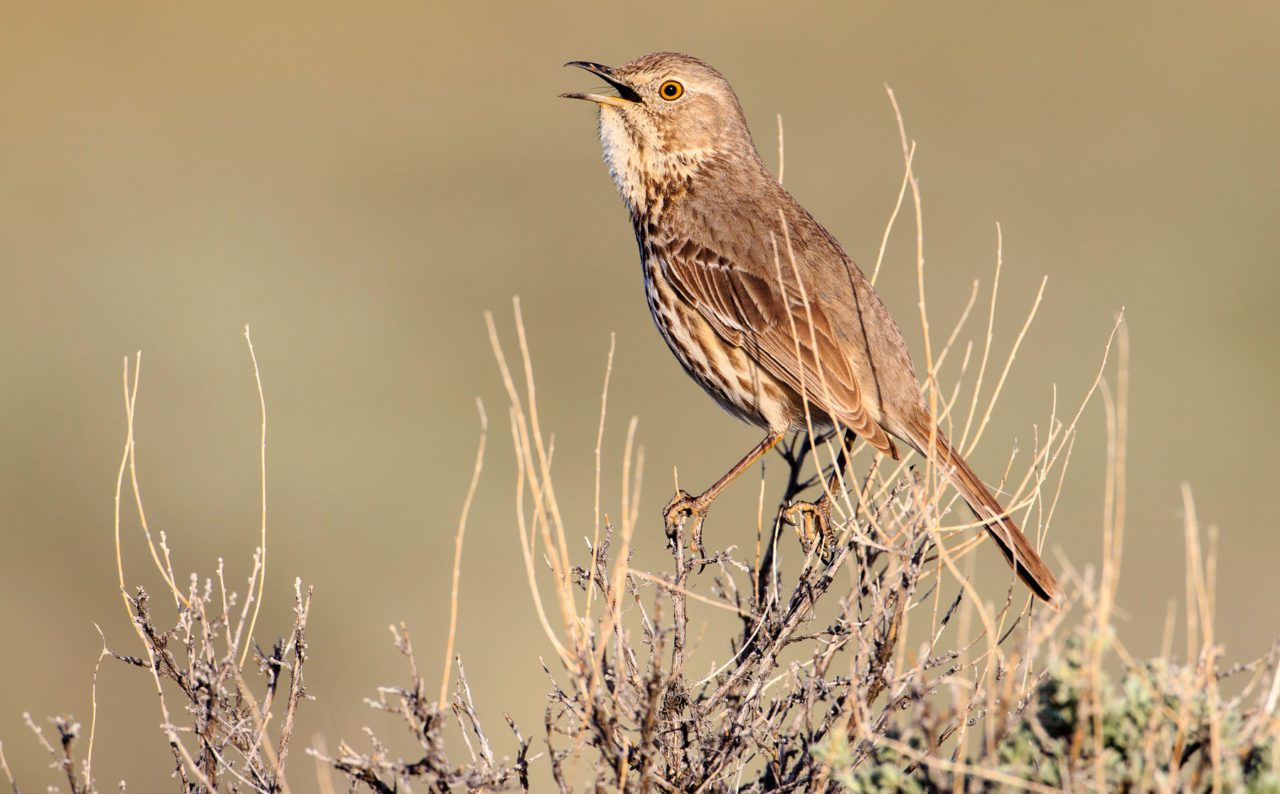
Minimize Movements and Sounds
Birds don’t like things that move quickly or suddenly. All of your movements should be slow, gentle, and contained. No arms waving, cameras swinging on straps, or standing up or squatting down quickly. In general, the longer you spend with a bird and the more comfortable it becomes, the looser you can be with your movements as long as they remain slow and calm. Again, one wrong move and they fly away.
In general, be as quiet as you can. This includes not speaking loudly, which I see often in the field and still can’t understand. Birds are easily startled by sudden or unfamiliar sounds like twigs snapping. One sound that you can’t avoid and that you will want to introduce gently is the clicking of your camera shutter.
Many birds will not tolerate a camera’s shutter noise at close range, especially if it is presented suddenly. Depending on the camera I am using and how loud it is (and some, like the Canon EOS-1D X Mark II shooting 14 frames per second, are very loud!), I will start introducing the sound of the shutter before I reach shooting range. I will take single images at first, then perhaps some short bursts as the bird gets used to it and while I move closer. Most birds quickly become accustomed to both loud shutters and flash if you introduce them gently and from a distance. Don’t underestimate your shutter’s ability to scare off birds, and only shoot in bursts if necessary. For some birds, you will want to use your silent shutter function. All of this applies when working from a blind as well.
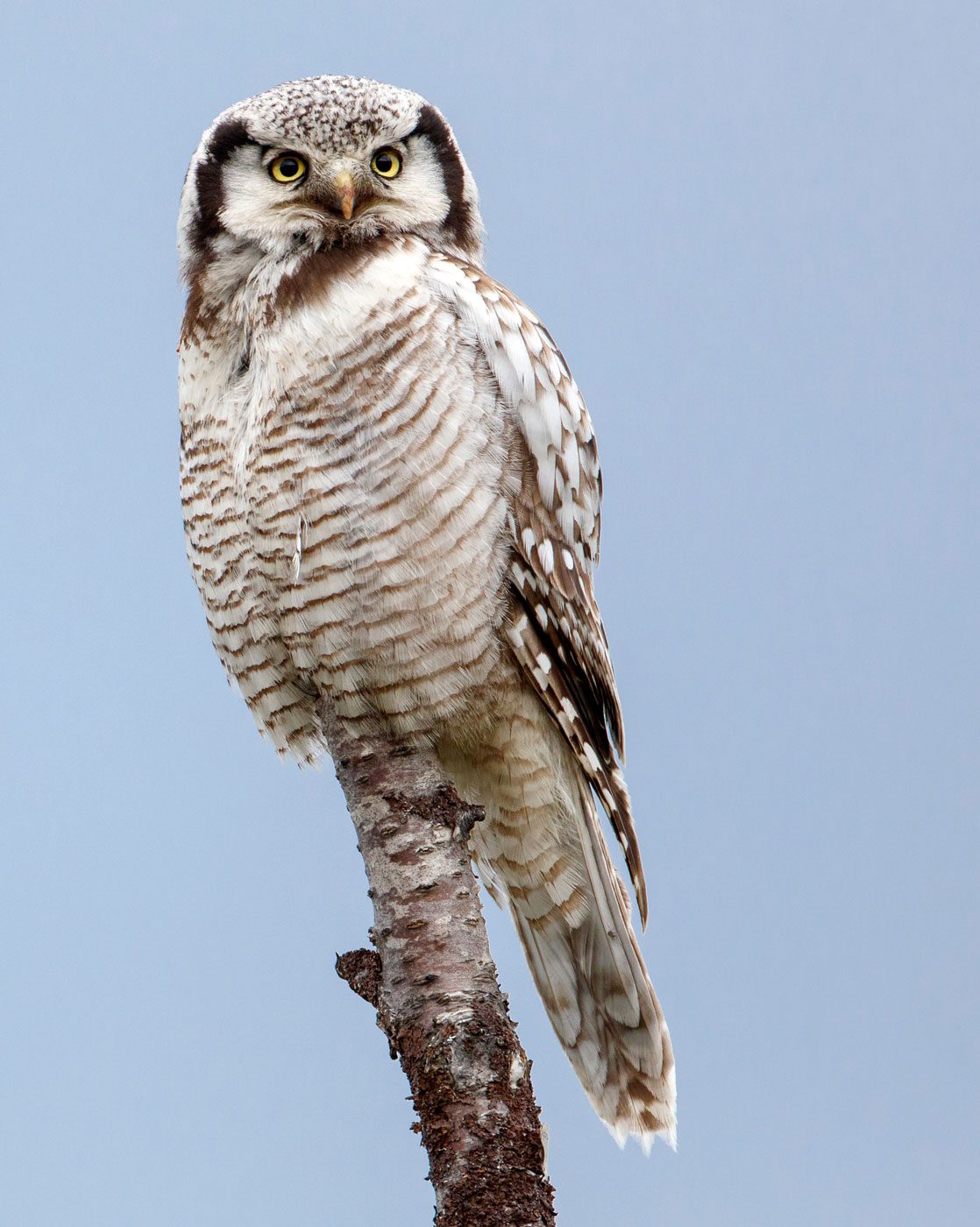
Recognize and React to Behaviors
Birds often give us behavioral cues that tell us how comfortable they are with our presence and how likely they are to depart. By paying attention to these cues, you can manage your approach and know when it’s time to freeze and wait and when it is okay to proceed. Signs that a bird is alarmed or more vigilant include standing more erect, stopping what they are doing, and alarm calling. Some birds like raptors will lean forward and expel waste prior to departing a perch. In addition to these more obvious signals, there are subtler clues that different species give that you’ll only learn through experience and observation.
Be aware of the behavior of other species nearby that may spook or flush the bird you are interested in. Hypervigilant birds like yellowlegs, stilts, and some ducks and geese can make it impossible to approach the bird you want to photograph. In general, the more birds around your target bird, the greater the chance that one species or individual will send the whole group flying. Approach isolated birds when you can.
Keep a Low Profile
You can get surprisingly close to many birds, especially shorebirds, if you stay low to the ground, crawling or sliding on your belly while pushing your tripod-mounted camera ahead of you. I have had many experiences where flocks of shorebirds have surrounded me at arm’s length as though I wasn’t there while I lay prone and relatively still. Similarly, if you are working in uneven terrain, on hillsides or even a ditch, it is usually best to approach your subjects from below rather than loom over them.
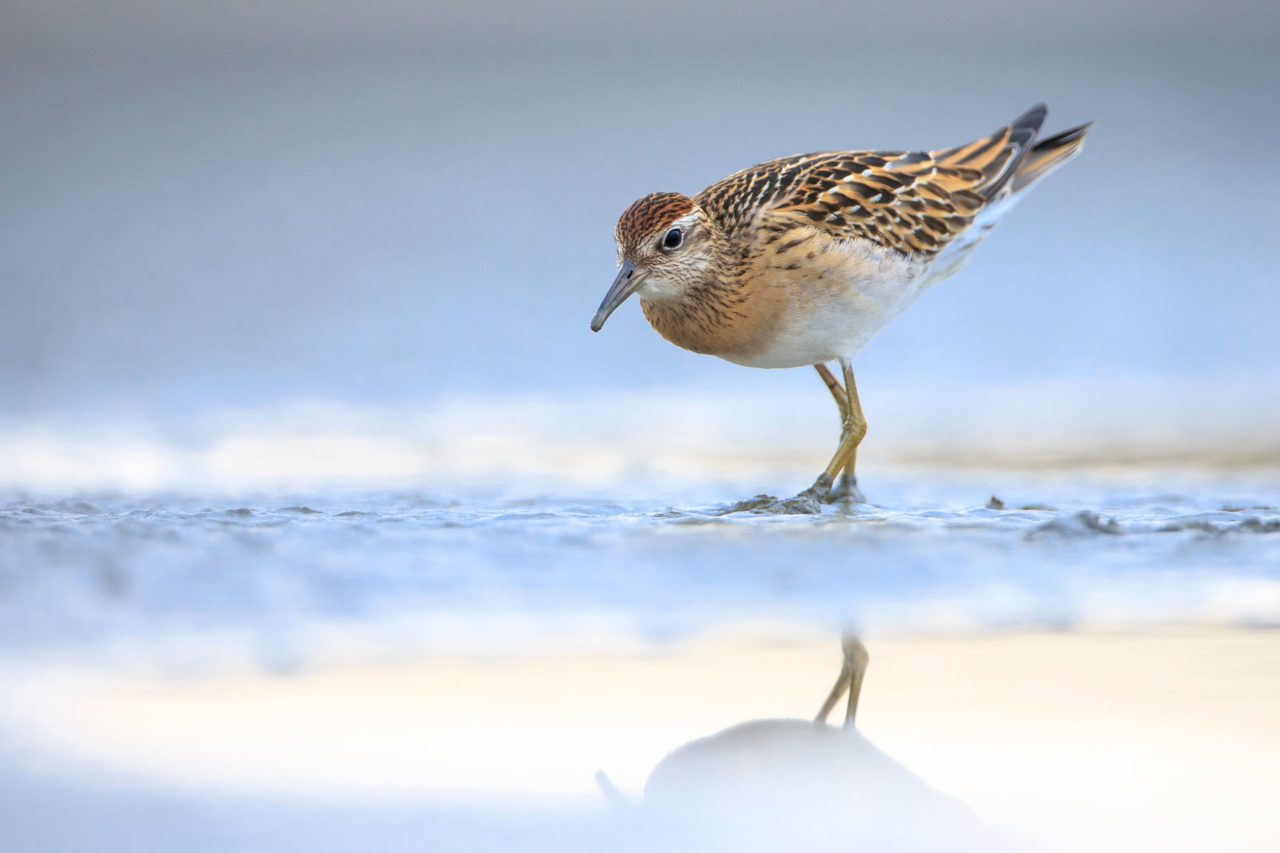
Practice with Habituated and Tame Birds
Habituated birds make great subjects for those learning bird photography or for those practicing new techniques. And often you won’t have to go far from home.
Individuals of many bird species will become accustomed to people if they encounter them daily without being harassed. This is most common in urban and suburban areas and at national and state parks and wildlife refuges, where wildlife is protected and human visitation is high. Ducks and wading birds in city parks and gulls, terns, pelicans, and shorebirds at public beaches are also good bets.
After observing birds for some time, you’ll notice that certain species are rarely habituated to humans no matter how frequently they encounter them. Belted Kingfishers, for example, are notoriously difficult to approach even though they are common in places like parks, waterfronts, and marinas.
Some bird species are just plain tame—they have little fear of humans whether they have encountered a human in their life or not. Birds of the boreal forest like Great Gray Owls, Northern Hawk Owls, Boreal Owls, and Spruce Grouse are usually remarkably tame. Birds that spend most of their life at sea—boobies, albatross, puffins, murres, auklets, phalaropes—are generally oblivious to people as well. For some species, juveniles that have just departed the breeding grounds can be remarkably tame compared to adults. Examples include juvenile Snowy Owls and many shorebird species. Sometimes you’ll run into birds that are tame for no known reason. Lucky you!
Don’t Give Up
When I say don’t give up, I don’t mean you should continue to pursue a bird that is clearly disturbed or that you should repeatedly flush a particular bird. I mean don’t give up generally. It is easy to get discouraged after a few failed attempts and conclude that photographing a particular species is just not possible at a given location. I can’t say how many times I have resisted the urge to give up and have tried one last time, resulting in a perfect composition just when the light was getting good. Despite experiences like those, I still have to remind myself from time to time to persist.

All About Birds
is a free resource
Available for everyone,
funded by donors like you
American Kestrel by Blair Dudeck / Macaulay Library
